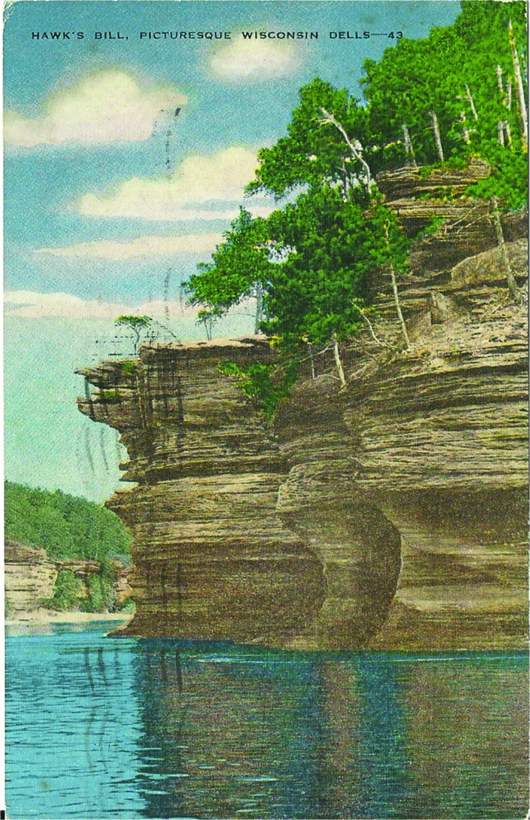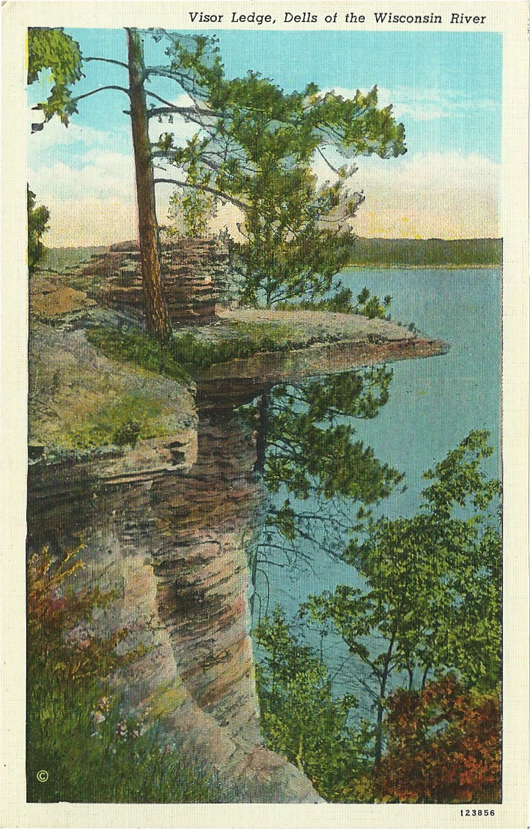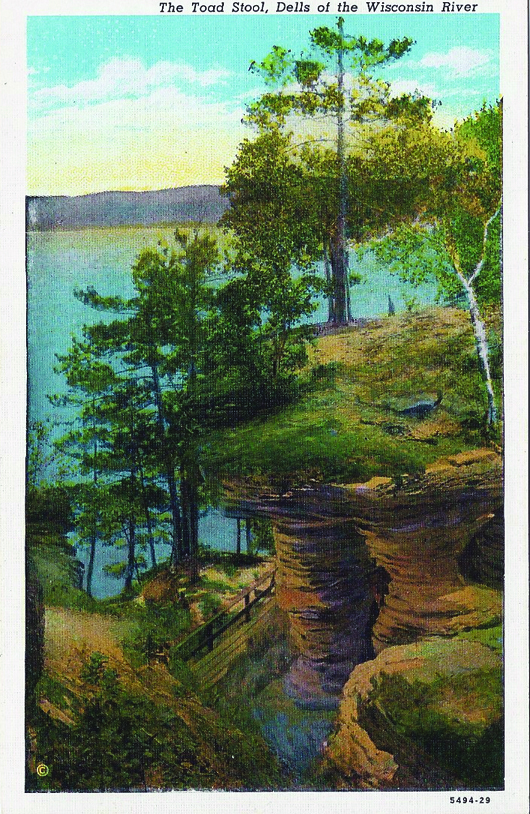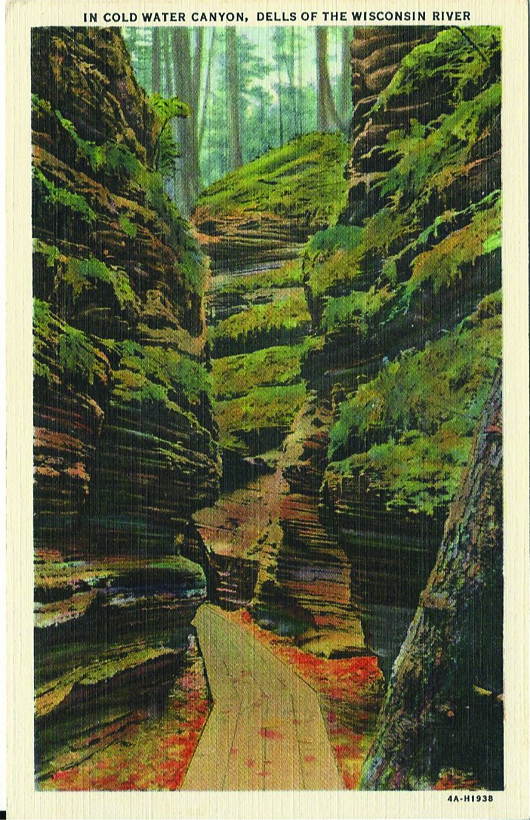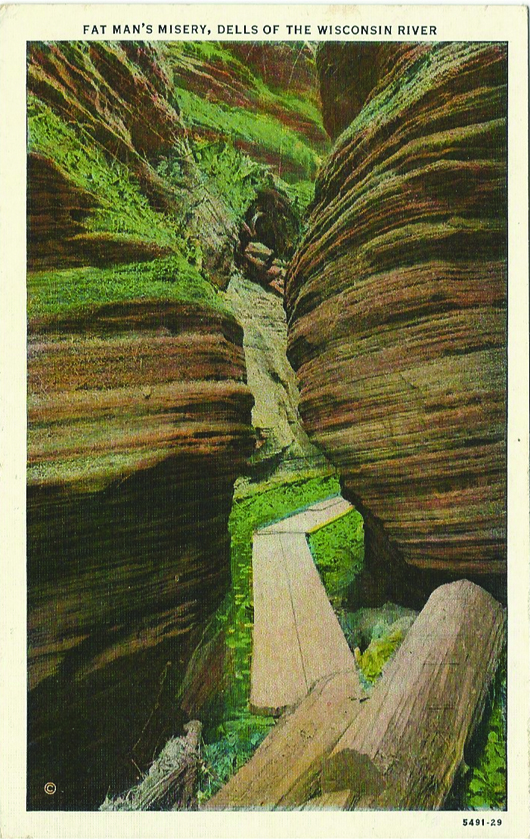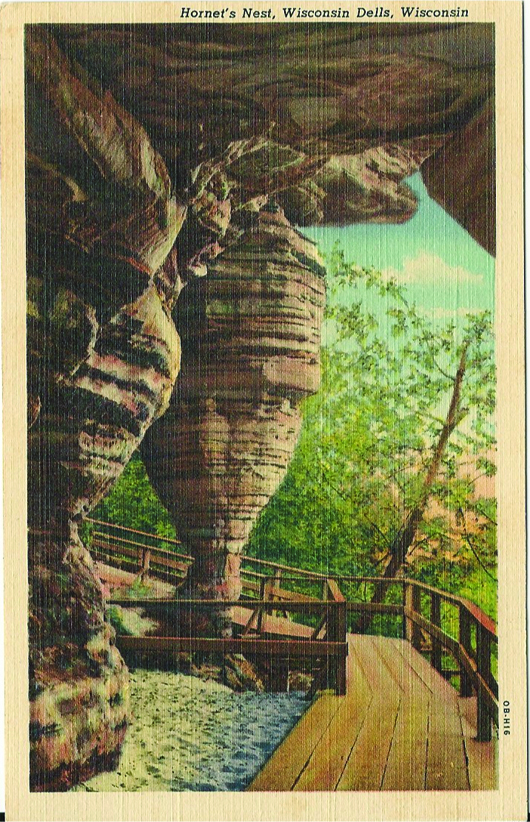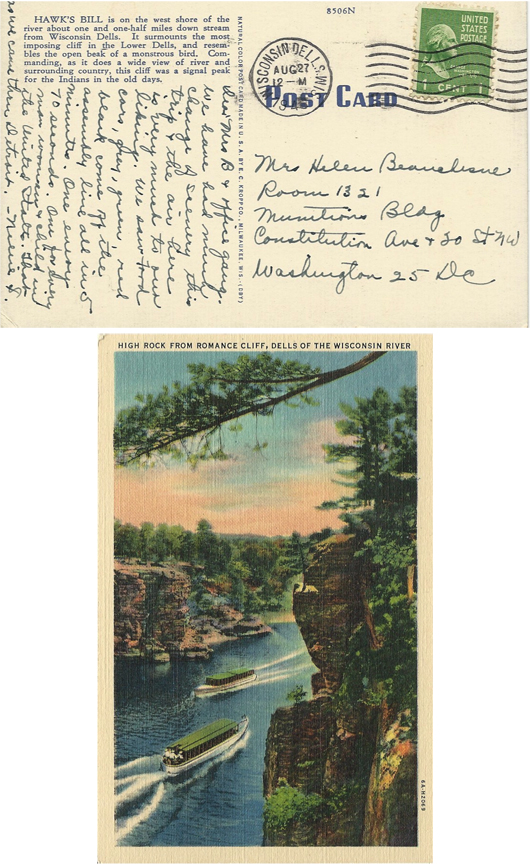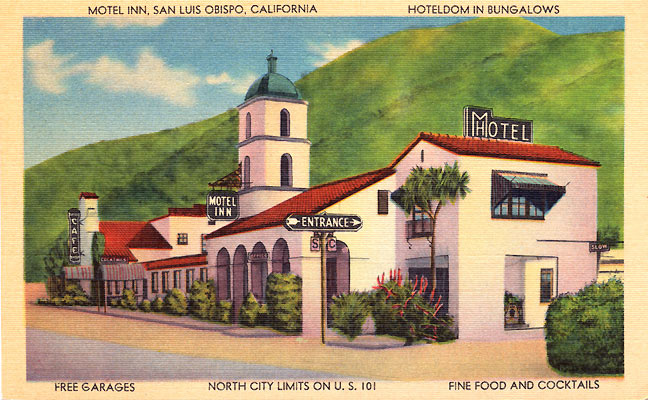
IOLA, Wis. – Americans have always had a special relationship with their cars. Automobiles are as much about freedom and the pioneering spirit as they are about industry and manufacturing.

IOLA, Wis. – Americans have always had a special relationship with their cars. Automobiles are as much about freedom and the pioneering spirit as they are about industry and manufacturing.
[av_heading tag=’h3′ padding=’10’ heading=’Postcards: Easter greetings celebrate springtime renewal’ color=” style=’blockquote modern-quote’ custom_font=” size=” subheading_active=” subheading_size=’15’ custom_class=”][/av_heading]
[av_image src=’https://www.liveauctioneers.com/news/wp-content/uploads/2015/04/2015_0402_AllEaster-Greeting-Egg-View.jpg’ attachment=’56898′ attachment_size=’full’ align=’left’ animation=’no-animation’ styling=” hover=” link=” target=” caption=’yes’ font_size=” appearance=’on-hover’ overlay_opacity=’0.4′ overlay_color=’#000000′ overlay_text_color=’#ffffff’]
Bold colors and the eggshell border make this farmyard vignette stand apart from the other Easter postcard greetings. It’s postmarked April 18, 1911, Minneapolis, Minn. Karen Knapstein image, courtesy of Antique Trader
[/av_image]
[av_textblock size=” font_color=” color=”]
IOLA, Wis. – After a long winter, everyone looks forward to spring – a season of renewal that carries with it feelings of possibility and optimism. Since ancient times, eggs have been associated with renewal and rebirth. Before artificial lighting, when sunlight was the only available light source, hens in locations without adequate daylight, stopped laying eggs through the winter. The resumption of egg-laying was a portent that spring was not far off.
Early Christians assimilated the egg as a symbol of Christ’s rising from the. Late 19th and early 20th century artists often incorporated several symbols of spring in their postcard designs. The monetary values on all of the cards illustrated here are minimal. Estimating these cards at a dollar or two apiece is generous. Easter postcards are abundant and for the most part are modestly priced.
The card with the simple text “Easter Greeting” on the front illustrates many springtime elements: four chicks, a hen, colored Easter eggs and a rabbit amid lush grass and shrubbery.
“A Merry Easter” is the greeting on a lovely embossed card made in Germany. The elaborate embossing is accentuated with simplistic coloring and outlines of applied glitter. The card depicts a chick perched atop an overturned basket with colored eggs tumbling out amid a bouquet of purple forget-me-nots.
“Loving Easter Wishes” was published by Raphael Tuck & Sons and printed in Germany. It was postally used and postmarked from Broad Street Station, Philadelphia, on March 28, 1907. The designer took artistic license by placing two chicks inside the cracked eggshell – unless, of course, the chicks just happened to find an empty goose egg shell in and around which to explore. Placing two or more chicks inside an egg is a common design element; perhaps it’s meant to symbolize abundance. A fun design, really, made more endearing by the sender writing “Auntie” on the front. Unfortunately, the card has some condition issues that makes it unsuitable for framing.
The “Easter Greeting” card stands apart from the rest in this grouping because of the vibrant colors and the artist’s use of a cracked egg to “frame” the scene of a nesting hen and rooster. The embossing adds an attractive dimension, too. This card was postmarked in Minneapolis, Minn., April 18, 1911.
Produced by the Stecher Lithographic Co. of Rochester, N.Y., the “Easter Gladness” card has a lot going on. It has tasteful embossing outlining the design and defining the texture of the cross. The card design is almost white-on-white with colored accents; the cross is set apart from the background by subtle shadowing. A chick stands atop a cracked egg and is framed by a wreath of what appears to be forget-me-nots.
The chick on the “With Best Easter Wishes” card isn’t particularly attractive, but it is adorned with vibrant forget-me-nots, pussy willows and rich coloring and embossing. I’m surprised the design isn’t centered on a cross, but on a vertical bar. The part of this card that’s the most fun is the greeting: “Hello Thelma. Did the rabbits lay any eggs for you? How is Houston? From Mark.”
A girl with her arms filled with chicks, sitting on the ground beside a nest filled with eggs covers the “Easter Greeting” card mailed in 1921. A brightly plumed rooster commands even more attention on the design than the child. I find the message on the card most endearing: “Dear Helen: I wonder what you are doing today. I bet you are in school. I wish you and Dorothy would write me and tell me what you study in school, and what you do when not at school. With love from Aunt Alice.”
Easter, whether your celebrations are secular or religious, can be a time of reflection and renewal. Not just a renewal of the season, or a reminder of your religious views, but an opportunity to renew friendships and family relationships that may have lapsed. Here’s hoping for an abundant season of renewals.
To enjoy more of what Antique Trader has to offer, view this complimentary digital issue: http://media2.fwpublications.com/ATR/2015DigitalIssues/Comp.pdff.

IOLA, Wis. – Traveler’s Digest ranks France as the most visited country not only in Europe, but the world. Renown for fashion, cuisine and an air of romance, the 2014 statistics estimate France has 81.4 million foreign visitors each year. To give an idea of just how fantastic that tourism statistic is, the 2013 census statistics show the United Kingdom has a resident population of 64.1 million, while France herself is home to 66.03 million people – 15 million fewer than the tourists. That’s a plethora of tourists.
France has a turbulent and rich history. The exquisite architecture and views captured on postcards provide evidence of their attraction for tourists. The Palace of Fontainebleau dates to the 12th century A.D. Originally used as a royal hunting lodge, the palace was modified from the 16th century on, with kings and queens, emperors and empresses redesigning and embellishing as they saw fit. The view on the “Fontainebleau. – La Palais – L’Etang aux Carpes. – LL” (Fontainebleau – The Palace – Pond with Carp) shows only part of the exterior; with more than 1,500 rooms, an aerial view is needed to see the entire expanse of the exterior simultaneously. You can see the sprawling enormity of the structure using the satellite imagery in Google Earth. (By the way, there are many common, inexpensive cards that show the extravagant room interiors and features of Fontainebleau, which will be covered in a future column.)
The “Chateau d’Azay-le-Rideau / Vue prise au Nord-Est” (View Captured in the North East) shows a slightly off-centered view of the French Renaissance chateau, which was built on the site of a ruined medieval castle between 1518 and 1527. The castle sits on an island in the middle of the Indre River (a tributary of the Loire River).
One of my favorite French postcards, the image of “Ancien Paris. – La Bastille, vers 1780. – ND Phot.” is on heavier card stock with deckled edges. It feels substantial, like the image it holds. The rendering adeptly portrays the intimidating prison. Destroyed in July 1789, during the French Revolution, all we have to feed our imaginations of this justifiably maligned structure are literature and centuries-old depictions. There are plenty of Bastille images because, being a pivotal event in the French Revolution, the destruction of the prison was a popular subject for artists.
At first glance, the Parc Monceau postcard is a bit of an enigma. What are Roman ruins doing in Paris? Actually, the Parc Monceau originated as a 20-plus acre public park in Paris and was completed in 1779. The garden’s designer, Louis Carrogis Carmontelle, sought to incorporate into one garden “all times and all places.” In addition to the colonnade folly (a folly is a scaled down architectural feature) shown on this postcard, Carmontelle also included an Egyptian pyramid, a Dutch windmill and antique statues, among other whimsical features in the park. Today, the park itself is scaled down and holds several private residences.
The “Grasse, Cite de Parfums – Vue sur les Usines” (Grasse, Perfume City – View with Factories) card is unique in this selection of French postcards in that it’s a view of factories, rather than historical architecture. The city of Grasse, on the French Riviera, is considered the world’s capital of perfume. Indeed, the city’s perfume industry far outweighs its tourism trade.
The view of Bordeaux – labeled “Bordeaux. – Cours de l’Intendance” – is a wonderful street view with both early automobiles and horse-drawn vehicles, as well as people in early 20th century period clothing bustling along the sidewalks and crossing the streets. Right down to the ornate iron gaslight street lamps, this is exactly the type of scene I picture in my mind when I think of “Old Paris.”
I saved my favorite card for last: The card with palm trees is a view of Angel Bay in the city of Nice, on the French Riviera. I like this card for a number of reasons: It has palm trees. It’s currently January, and I’m in Wisconsin. I really like palm trees and am dreaming of the tropics. It’s also postally used from a Staff Sergeant stationed out of New York City; the postmark is August 23, 1945. I can only imagine the atmosphere in Europe just a few months after VE Day. And his message: “Hello Evy – Am out here on a furlo,[sic] and am having a good time. This place is sure something to see. Will write later. Eddie.” I’m certain the French Riviera is “something to see.” Maybe someday.
In the simple task of flipping through a few picture postcards, and doing a bit of research, I’ve imagining myself traveling not only across the world but through time, as well. What wonderful, low-tech entertainment and education postcards provide! And, on that note, I’ll take my cue from Staff Sergeant Eddie and sign off with a flourish and a promise: Will write later.
Note: Please pardon any egregious errors in translation; it’s been a long time since I took my last French class.
Karen Knapstein is Print Editor for Antique Trader. A lifelong collector and student of antiques, she lives in Wisconsin with her husband, Joe, and daughter, Faye. She can be reached at karen.knapstein@fwmedia.com.
# # #
Karen Knapstein’s Postcard Ponderings column appears in Antique Trader. To enjoy more of what Antique Trader has to offer, view this complimentary digital issue: http://media2.fwpublications.com/ATR/2015DigitalIssues/Comp.pdf.
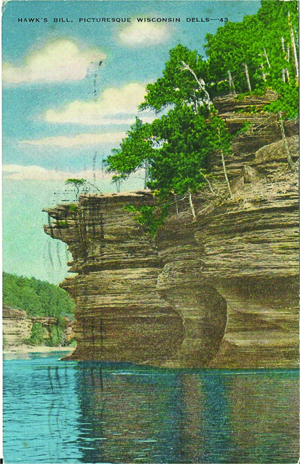
IOLA, Wis. – Long before Wisconsin Dells became known as the “Waterpark Capital of the World,” tourists flocked to the natural attraction to view the famous rock formations carved over millennia by the waters of the Wisconsin River.
I grew up close enough to the popular tourist area that each year our school safety patrol took an overnight trip to enjoy the attraction. The trip included the famous duck boat tours – which have been running since 1946 – to see the formations of the dells up close. It was an unforgettable experience.
The collection of postcards shown here were mostly produced by Curt Teich of Chicago and copyrighted by H.H. Bennett Studio of Wisconsin Dells, Wis. The exception is a “Hawk’s Bill, Picturesque Wisconsin Dells-43” card made by E.C. Kroppe Co., Milwaukee.
This example, the only one in the group that is postally used (Scott 804; Wisconsin Dells cancel), was sent to the Munitions Building on Constitution Avenue in Washington, D.C., in August 1945. The sender informed the recipient, “We have had much change of scenery this trip & the air here is very much to our liking.” It’s unfortunate there is cancellation ink defacing the front of the card, but the colors and the image are still bright and enjoyable.
Of the Curt Teich cards, I find the “Stand Rock” example the most enjoyable. Looking closely, the artist has rendered a man jumping over the gaping expanse between the cliff ledge and Stand Rock. I believe the artist was an optimist, because it looks as though the jumper will actually make it. The card description explains, “It is a huge table, supported by a single water-torn, rather irregular shaped column of rock, about 46 feet high. The top is a great sandstone slab, some 18×24 feet in area and practically level. The top is 5 1/2 feet from the main cliff.” Research suggests the artistic rendering is based upon an old photograph.
Today the Stand Rock location is a popular campground with more than 100 acres of nature and hiking trails. As an added attraction, specially trained dogs jump across to the formation and back.
The “Fat Man’s Misery” card shows the plank trail leading through the narrowest point of Cold Water Canyon. The view “In Cold Water Canyon” has such wonderful perspective you want to just step onto the path to explore the ravine.
“The Path in Witches Gulch” is even more spectacular. This card, copyright 1931, explains, “The path in Witches Gulch leads along the tortuous way, over miniature water falls and between the towering rock walls of this mysterious gorge.” It truly makes me want to tie on some comfortable walking shoes and take a hike.
Other popular scenes included in my small but colorful collection include “Visor Ledge;” “The Toad Stool;” “The Jaws;” illustrating Romance Cliff and High Rock; “Hornet’s Nest;” and “High Rock from Romance Cliff,” which, as the card explains, are the “Lower Jaws of the Dells and the first high cliffs on the Upper Dells.”
I believe the reason these cards resonate with me is that when I was in sixth grade and touring with my fellow safety patrol, I didn’t have a camera. I can remember how much fun it was riding in the ducks, what the wooden plank trails were like (I remember stumbling at least a couple of times), and have a recollection of what the sandstone rock formations looked like. These artfully rendered cards, with their scenic views, bring those nostalgic recollections back into focus.
Contemporary postcards don’t have anywhere near the following that vintage postcards had back in their day, in part because every person who is carrying a smartphone has a camera at their fingertips; they can capture their scenic setting at will and file those images away to review at any time. Why should travelers spend a dollar on a postcard when they’ve probably got a memory card filled with vacation images. As a result far fewer postcards are produced today than were produced in the Golden Age of Postcards. Because fewer are printed will the postcards of today be valuable 100 years from now? Nope. Because, as we’ve seen countless times, “old” doesn’t automatically mean “valuable.” Supply still has to outweigh demand. There are probably still plenty being produced to satisfy the history and esoterica buffs of the future without them having to compete for them.
Personally, I still buy new postcards when I go someplace special (in addition to the photographs I take, of course). I have gorgeous contemporary cards from Hawaii and state parks that I visit. The vantage points and the clarity of the images are far better than anything I could accomplish. My hope is they will help keep those cherished memories of family trips in focus – not only for me, but for my family, as well.
The vintage Wisconsin Dells postcards pictured here are but a small sampling of the plethora that have been produced through the decades. Since the renderings and print runs are plentiful, prices are next-to-nothing to purchase examples like these. Most cards can be had for several dollars or less.
If you’re just interested in sightseeing from the comfort of your easy chair, and not actually acquiring cards for yourself, you can view hundreds more vintage Wisconsin Dells rock formation-themed postcards online at http://www.vintagewisconsindells.com/rock-formations.htm.

ADDITIONAL IMAGES OF NOTE
